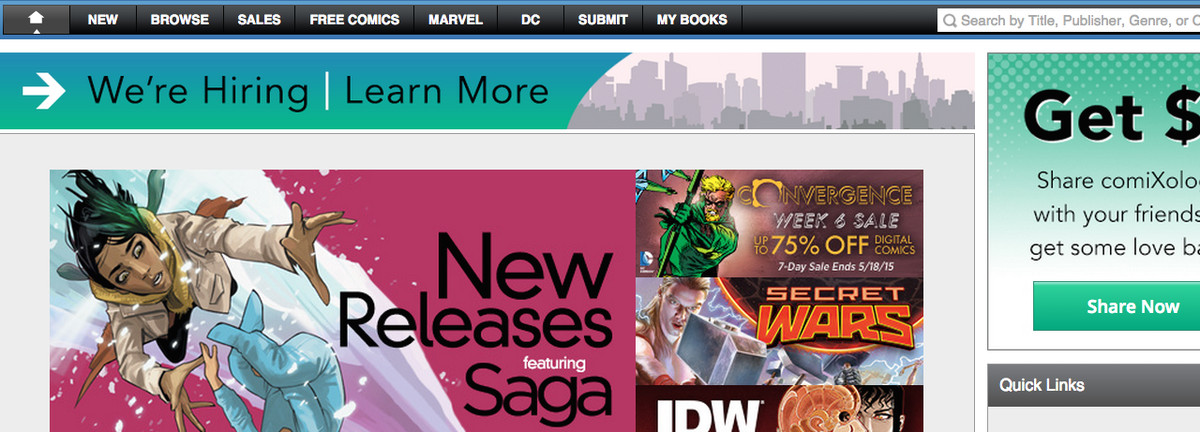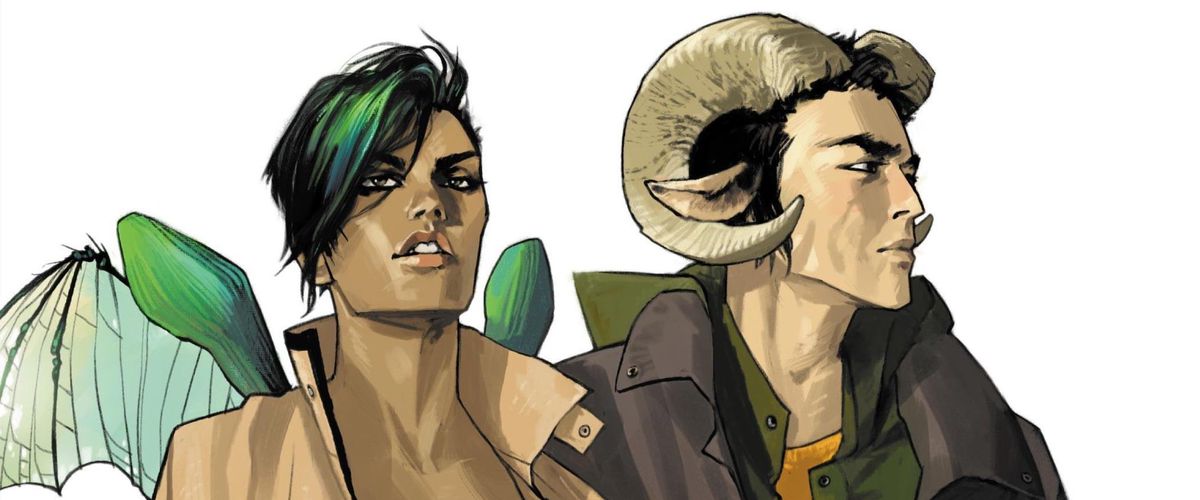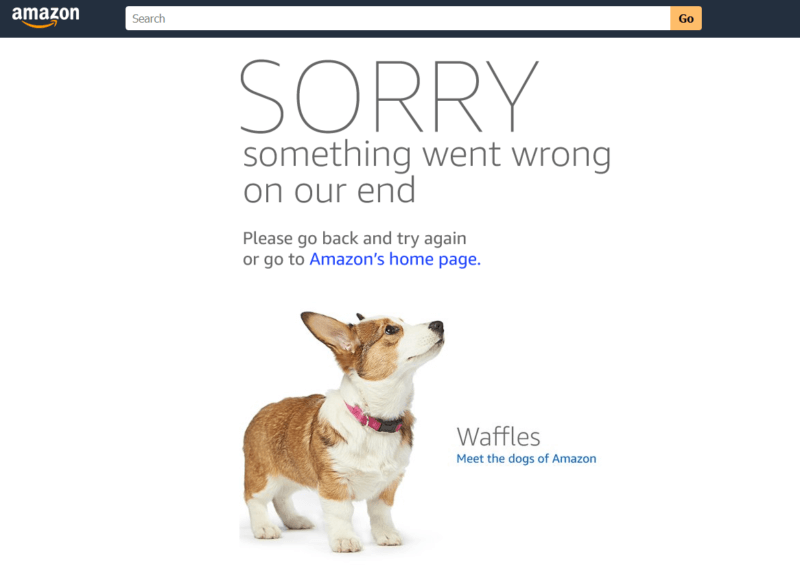Comixology was never going to save comics, but it tried
The Comixology app, the mobile incarnation of the digital comics platform owned by Amazon since 2014, has finally shaken off this mortal coil. On December 4, individual Comixology libraries and Comixology Unlimited subscriptions were swiped to users' corresponding Kindle libraries, where these comics can now be read using the Kindle app or the read.amazon.com browser experience (still in beta).
It's been a slow-moving and inevitable apocalypse for Comixology users. In 2018, Amazon shut down Comixology Pull List, a service that allowed readers to order comics from brick-and-mortar stores via Comixology.com. In 2022, the company merged the Comixology Submit program with Kindle Direct Publishing and closed the Comixology.com store, forcing comic buyers into the mainstream shopping experience. (You know your UI is bad when even Patton Oswalt is tweet about it.) Earlier this year, Amazon laid off much of Comixology's workforce, with those remaining saying they “felt like their hands were tied when making important decisions.”
The tension between Comixology and the company's mothership has undoubtedly existed since the acquisition of the digital comics platform in 2014. After Amazon acquired the app from its founders, the company removed the ability to purchase comics from all iOS versions of Comixology, to avoid paying app store fees to its biggest tech competitor, Apple.
But this is not a clear case of a huge monopoly targeting a small industry. Comixology was already a monopoly. They are monopolies down to the last detail.
Comixology was supposed to revolutionize the comics world

Image: Comixology.com
Before I ever read a comic on Comixology, I used Comixology Pull List to keep track of upcoming releases – there was a time when that was all you could do there! When it launched in 2007, the service was largely focused on providing an online community and independent resources to keep track of the comics you wanted to buy. A digital comic reader service, “Comics by Comixology,” wouldn't launch until 2009, and in 2011, when DC Comics announced that every issue of the groundbreaking New 52 relaunch would be available digitally the same day as its release, it felt like a tectonic shift.
In a very short time, the ability to purchase a monthly-issue digital comic on the same day it hit physical shelves became not only normalized, but expected. And at that time, Comixology became synonymous with digital comics distribution in the English-language market. Even Marvel and DC's own digital stores, now closed, were just Comixology's branded and siloed storefronts.
Retailers were screaming (admittedly, it's a pretty screaming bunch) that day-and-date digital would slam shut the coffin of every comic book store in America. But in the end, it turned out that some people like digital comics, and some people like physical comics. There was overlap in that audience, but not in a way that jeopardized brick-and-mortar retail. Books could be successful in digital sales if they flopped physically. We know this to be true.
But we only know because of the few times Comixology and publishers have deigned to let us know.
Being “Netflix for comics” had its drawbacks

Fiona Staples/Image Comics
Comixology shared many of the fundamental drawbacks of the theatrical streaming services, including the fact that ratings can be a need-to-know, with the publishers deciding who needs to know.
The major problem of the scarcity of digital media also applies here. If your local comic shop refused to sell Saga because the cover showed Alana breastfeeding her little daughter, you could go to the store in the next town, or order one from the next state. When Comixology decided not to sell Saga #12 in 2013, out of an abundance of caution regarding Apple's own monopolistic App Store rules, you couldn't get a digital copy of it from a competitor because there wasn't one. And if Saga Had it not been one of the most popular books on the stands at the time, with a passionate audience willing to make social media hell, Comixology and Apple might not have caved and allowed it to be sold. A smaller title could have been SOL.
But even this belies the fact that most people don't own their Comixology comics in the real sense of the word. Unless publishers has signed up to offer DRM-free downloads (and the biggest never), the money you paid to Comixology was never for a comic book. It was merely for permission to watch a comic through their own service, the consequences of which are immediately apparent to any Comixology app user currently trying to figure out how the Kindle app works.
So what now?

Image: Amazon.com
Well, there's the subscription option – Marvel Unlimited, DC Universe Infinite – and some smaller publishers offering their own digital retail services. There's your local library, and there are a few emerging digital retail platforms in beta trying to fill the vacuum. But from the moment of publication, there is no true a la carte purchasing solution that takes place the same day as the release (especially if you want to read a Marvel or DC book, which are currently only available through Amazon's systems).
Comixology made it look easy, but it must be emphasized, while we're pouring one out, that the comic book game is hard. Comixology has standardized Guided View, the feature that allows users to read a comic strip panel by panel – a must for making the US monthly comic strip readable on a smartphone. And Guided View is formatted on the digital store side, not the publisher side. Any company trying to get into this area will have to take on the subjective, week-by-week, human work of converting page-by-page files into panel-by-panel reading, in addition to running a digital store, stocking a digital library and maintaining relationships with print publications, app stores and mobile technology companies.
Neither DC nor Marvel Comics are so full of assets that they have the manpower or bandwidth to maintain their own à la carte digital comic libraries and storefronts forever. But even if Disney and Warner Bros. could be expected to give their tiny print publishing subsidiaries that kind of money for product development, that's still not what the public wants.
You don't go to one bookstore for Penguin Random House books and another for Macmillan books. Just go to the damn Barnes & Noble. There is a demonstrable need here for a flexible, industry-wide solution, but the monthly US comics industry is small. There's just not a lot of market pressure for a bespoke, comics-specific digital platform, let alone multiple healthy competing platforms.
No one is into comics – or at least no one is stays in comics – to make money. They stay because of passion. The people who kept Comixology going through its ups and downs had that passion. It was the driving force behind the site's creation as a comics-focused online community (incorporated under Amazon's management). It floated Comixology Pull List (closed under Amazon's management) as a service to facilitate communication between buyers and retailers. It powered Comixology Originals (head of the program has resigned managed by Amazon), the company's creator-owned digital publishing series.
Comixology was never going to save comics, but it tried. It tried to provide what comic book creators, comic book publishers, comic book sellers, and comic book readers needed. Maybe there is a better solution. But if Comixology's death has shown anything, it's that Amazon doesn't want to find it.
